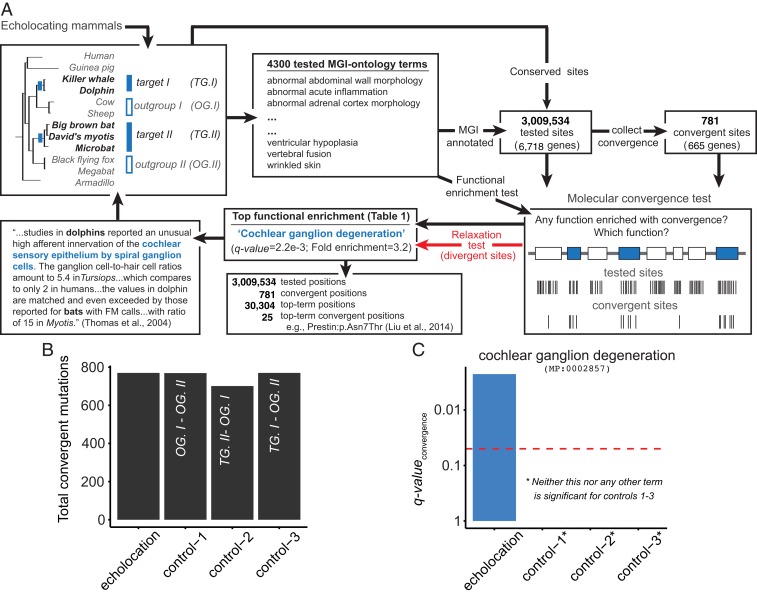Fig. 2.
A molecular convergence test. Example application to echolocating mammals: (A, Top Left) We picked 2 target groups (TG) of species with a phenotypic convergence (echolocation here), and 2 outgroups (OG). (Top Middle) Our algorithm identified all cross-species conserved (and thus functionally important) amino acid positions in genes annotated for any of 4,300 specific MGI phenotype functions. (Top/Bottom Right) We then identified the subset of positions showing (parallel or strictly) convergent substitutions between our target groups and performed a hypergeometric test over positions to find the single most statistically enriched MGI function (if any) for amino acid convergence. We also tested for divergent substitutions between our target groups (red arrow). (Bottom Middle/Left) If the most-enriched convergent function is not also enriched for divergent substitutions, we declared an adaptive molecular convergence event and linked it back to the convergent species phenotypes. In this example, we discovered 25 convergence events in 18 genes regulating cochlear ganglion function in bats and whales. The cochlear ganglion prediction is particularly striking considering that 4,300 different functions were evaluated to arrive at a poster-child organ for phenotypic convergence between the 2 echolocating groups. (A and B) Comparable total number of convergent substitutions were observed in echolocating mammals (TG.I and TG.II in A, Top Left) as in 3 control sets formed by shuffling either or both target groups with their respective outgroups. (C) However, only the echolocating set of B showed a statistically significant enrichment for molecular convergence in the ontology term “cochlear ganglion degeneration.” In fact, none of the control experiments yielded any statistical enrichment across all 4,300 tested terms.

